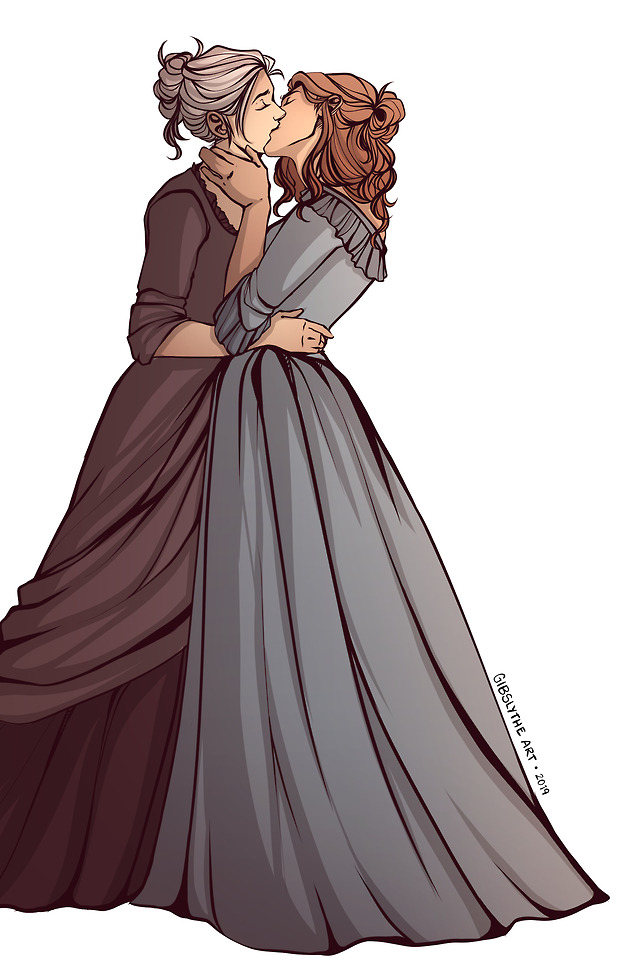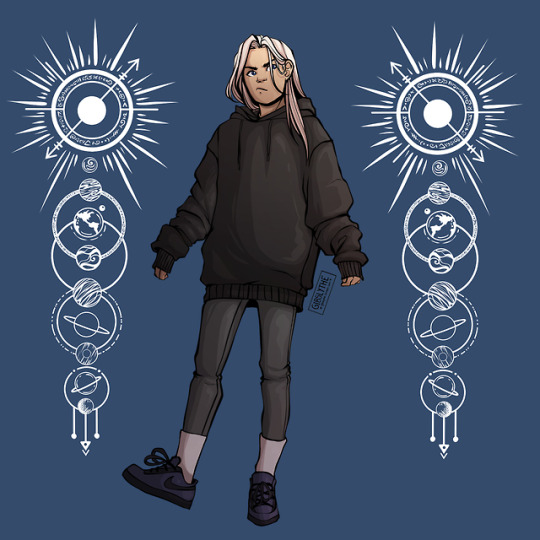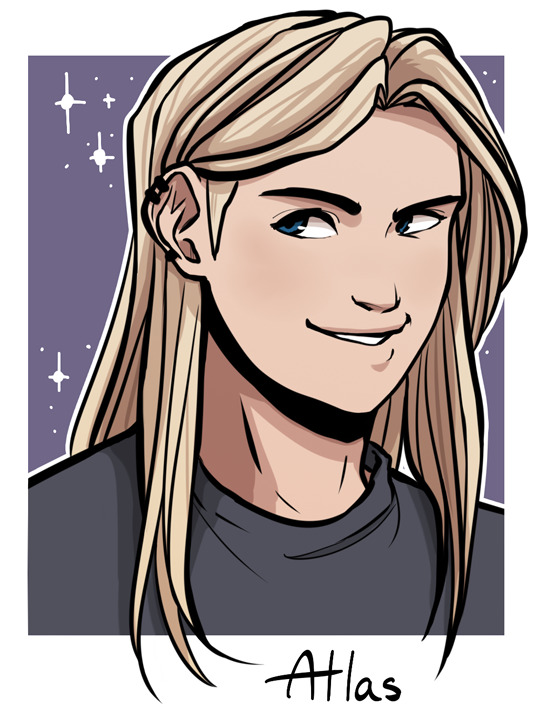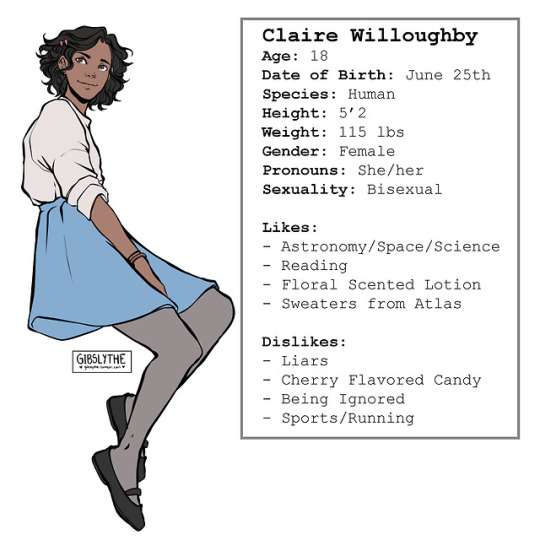#the astronomical study of atlas wild
Photo

Hubble inspects two galaxies connected by a luminous bridge This image from the NASA/ESA Hubble Space Telescope shows two of the galaxies in the galactic triplet Arp 248—also known as Wild's Triplet—which lies around 200 million light-years from Earth in the constellation Virgo. The two large spiral galaxies visible in this image—which flank a smaller, unrelated background spiral galaxy—appear connected by a luminous bridge. This elongated stream of stars and interstellar dust is known as a tidal tail, and it formed by the mutual gravitational attraction of the two foreground galaxies. This observation comes from a project which delves into two galleries of weird and wonderful galaxies: "A Catalogue of Southern Peculiar Galaxies and Associations," compiled by astronomers Halton Arp and Barry Madore, and the "Atlas of Peculiar Galaxies," compiled by Halton Arp. Each collection contains a menagerie of spectacularly peculiar galaxies, including interacting galaxies such as Arp 248, as well as one- or three-armed spiral galaxies, galaxies with shell-like structures, and a variety of other space oddities. Hubble's Advanced Camera for Surveys scoured this assortment of eccentric galaxies in search of promising candidates for future observations with the NASA/ESA/CSA James Webb Space Telescope, the Atacama Large Millimeter/submillimeter Array, and Hubble itself. With the wealth of astronomical objects to study in the night sky, projects such as this, which guide future observations, are a valuable investment of observing time.
5 notes
·
View notes
Photo

My wish for the new year is to spend all of it right next to you
(Atlas Wild and Blaire Willoughby)
#ocs#wlw#f/f#sapphic art#original characters#character design#gibbarts#gibbarts art tag#asoaw#astronomical study of atlas wild#atlas wild#blaire willoughby#atlas x blaire#the astronomical study of atlas wild#my art#art
6K notes
·
View notes
Photo

What a year this has been
#the witcher#novae#novaecomic#novae comic#the astronomical study of atlas wild#tiger tiger#oc#granted originals#tooth and claw#'may 2020 hold wonderful things' well it sure did hold THINGS#god what a decade this year has been#2020 art summary#art summary
8 notes
·
View notes
Text
Milky Way no longer visible to one third of humanity, light pollution atlas shows
check it out @ https://tuthillscopes.com/milky-way-no-longer-visible-to-one-third-of-humanity-light-pollution-atlas-shows/
Milky Way no longer visible to one third of humanity, light pollution atlas shows
Scientists describe cultural lack of unparalleled magnitude as global atlas reveals extent of sunshine pollution within the worlds skies
It’s inspired astronomers, artists, musicians and poets however the Milky Way turn into a remote memory for a lot of humanity, a brand new global atlas of sunshine pollution suggests.
The research reveals that 60% of Europeans and almost 80% of Americans cannot begin to see the glowing gang of our universe due to the results of artificial lighting, even though it is imperceptible towards the entire populations of Singapore, Kuwait and Malta.
Overall, the Milky Way is not visible to several third from the worlds population.
Lead author Fabio Falchi in the Light Pollution Science Institute in Italia stated the problem would be a cultural lack of unparalleled magnitude.
Chris Elvidge of america National Oceanic and Atmospheric Administration along with a co-author from the study, added the occasions he’s seen the Milky Way happen to be magical encounters.
Through our technology weve stop that possibility for big figures of individuals for multiple generations now, he stated. Weve lost something – but how can we place value onto it?
Explained John Milton like a broad and ample road whose dust is gold, and pavement stars, the Milky Strategy is so obscured through the results of modern lighting that it’s no more visible to 77% from the United kingdom population, using the universe masked from view across nearly 14% of the nation, including regions stretching from London to Liverpool and Leeds.
Further afield, areas round the metropolitan areas of Hong Kong, Beijing along with a large stretch from the New England of the usa are among individuals in which a peek at the galactic band is unthinkable – a scenario also found across a lot of Qatar, holland and Israel. In Belgium, it can’t be viewed in 51% of the nation.
Humanity has surrounded our world inside a luminous fog that stops the majority of Earths population from getting the chance to look at our universe, the authors write.
IMG 2 TT
The bright areas on the map show where the glow from artificial lighting blots out the stars and constellations. Photograph: University of Colorado/PA
Published in the journal Science Advances by an worldwide group of scientists, the study is dependant on data collected from space through the Suomi National Polar-orbiting Partnership satellite, along with computer types of sky luminescence and professional and citizen science measurements of sky brightness obtained from the floor.
The resulting global atlas reveals that giant swaths of humanity experience light pollution, including greater than 99% of individuals living in america and also the Eu. People living near Paris would need to travel 900km to areas as a result central Scotland, Corsica or central The country to locate a region with night skies almost unpolluted by light, the authors add.
By comparison, Central African Republic and Madagascar are some of the countries least impacted by light pollution, with nearly the whole of Greenland boasting pristine skies.
Before the creation of night-time lighting grew to become really prominent within the 19th and 20th centuries, everyone could have been acquainted with the Milky Way, stated Marek Kukula, public astronomer in the Royal Observatory in Greenwich, who had been not active in the study. We have seen it in mythology concerning the sky, in most cultures all over the world. It is among the apparent aspects of heaven combined with the stars, the planets and also the moon.
When light from your streetlamps, homes and illuminations is tossed up in to the sky it bounces off particles and moisture tiny droplets within the atmosphere and it is scattered, leading to artificial sky glow – among the important aspects adding to light pollution. The upshot is the fact that spectacles such as the Milky Way may become obscured from view.
The night time sky belongs to our natural heritage. It’s beautiful, it’s awe-inspiring or being able to see it’s a method for us to connect with the broader world and understand our devote natural world, stated Kukula. When we lose that it’s a shame because we’ve lost that direct reference to something larger than us then one that’s very beautiful.
The problem turn into worse. Based on the new study, if all sodium lighting is substituted for awesome white-colored Brought lighting, artificial sky brightness seen across Europe could greater than double because of the rise in blue-light emission.
Also it isnt only our look at the night time sky that’s impacted by light pollution. There’s also biological consequences, not just on wild birds and insects and mammals, but additionally even on humans, stated Elvidge, mentioning the light pollution can disrupt natural conduct of creatures and it has elevated numerous human health concerns.
It’s not all disaster and gloom. Regardless of the Milky Way being masked from view in lots of metropolitan areas over the United kingdom you may still find regions of the nation where you’ll be able to obtain a good look at the night time sky. There are numerous dark sky parks and reserves within the United kingdom that have been worldwide certified through the International Dark Sky Association to possess lower levels of sunshine pollution – places like Galloway Forest Park, stated Kukula, adding that various online tools will help direct stargazers right area of the sky.
However the authors from the new study say more must be completed to tackle the problem of sunshine pollution. Among possible measures, states Elvidge, are using more shielded street lighting, motion-activated lights and cut-off occasions for illuminating structures.
Kukula concurs, It’ll reduce our power bills, it’ll reduce our carbon footprint, it will not modify the lighting we have around the roads, he stated. And it’ll let us see a lot of wonders from the night sky.
Our children and grandchildren won’t ever observe that beauty
IMG 3 TT
Maggie Aderin-Pocock MBE . Photograph: Richard Saker for the Observer
We are here on planet Earth but we live in a huge cosmos, and its one of the things that links us to our position in the universe. And so it is wonderful to see it. I think by looking up at the stars we have endeavoured to do so many things, weve sent probes to Pluto and beyond, and if we lose contact with that I think we lose some of our ability to dream and to aspire. It starts with the Milky Way but where will it end?
I spent a wonderful six months working at a telescope in Chile, at the Gemini telescope, and there we could actually see [the Milky Way] – it did look like a path across the sky. It has inspired songs, it has inspired people to great endeavours and so I think the more light pollution there is the more we miss out on that, and the generations to come will never see that beauty.
Maggie Aderin-Pocock, space researcher and presenter from the Sky during the night
I’m possibly more inspired through the Milky Way than any artist that has ever resided
For me personally the Milky Way continues to be an unfailing supply of inspiration and question, as fundamental element of my identity as the truth that I survive Earth within our Solar System.
I’ve been a separate evangelist for that universe, and am possibly more inspired through the Milky Way than any artist that has ever resided.
I deplore the barriers we’ve erected that block the vista for many of Earths people. Nothing can obvious your brain, elevate the soul, or inspire curiosity greater than the Milky Way.
Jon Lomberg, artist and principal artistic collaborator of astronomer Carl Sagan
Its essential that it is not just astronomers who worry about this
IMG 4 TT
Martin Rees, the astronomer royal. Photograph: David Levenson/Getty Images
The night sky is the most universally-shared part of our environment. Its been gazed and wondered at, throughout history, by people in all parts of the world. Its indeed a sad deprivation that many young people have never seen a clear starry sky. And its important that its not just astronomers who care about this.
Im not an ornithologist, but Id feel deprived if songbirds disappeared from my garden. Likewise, there would surely be widespread sadness if light pollution screened out our celestial environment from ever more of us.
Lord Martin Rees, astronomer royal
The Milky Strategy is our link to another
IMG 5 TT
Ben Miller, comedian and author of The Aliens Are Coming! Photograph: Jim Ashcroft/ Dan Clifton/ Abigail Adams/BBC
The Milky Way is our link to the Other: to the lost civilisations out there in the galaxy, so far away and so profligate that they appear not as stars, but as a single brush stroke of watery light. When we lose the Milky Way, we sever the umbilical cord that connects us to the wider universe.
Ben Miller, actor, comedian and author
We, within our ceaseless dash to earn money and canopy the planet with concrete, have forfeit this priceless treasure
IMG 6 TT
Former guitarist of Queen, Brian May. Photograph: Facundo Arrizabalaga/EPA
Its not just the Milky Way [people] cant see. Who in the 21st Century has ever seen the Zodiacal Light – that beautiful cone of dusty light that can even outshine the Milky Way, a thrill to see if you are lucky enough to have dark skies where you live. And probably about 10,000 stars that the three Wise Men on their way to Bethlehem would have been able to see are all invisible to us in the cities, where we are swamped by mainly unnecessary stray light. From my roof in Kensington on a clear night I can see roughly 30 stars – its a tragedy, really. Along with all the other excesses of what we call civilisation, our first-hand awareness of the cosmos has been forgotten.
We are so fortunate to be living on a planet that gives us a view, not only of our own Solar System companions: the planets, comets, etc – but also of countless stars in our own Milky Way Galaxy. Because of this weve been able make the foundations of cosmology, discovering the very nature of the vast universe around us. From our position out on a spiral arm of the Galaxy, we see both inwards towards the centre of the Galaxy and outwards towards its edge. The billions of stars in the Galactic plane show up as a milky light which has enchanted people from the dawn of history. But we, in our ceaseless dash to make money and cover the world with concrete, have lost this priceless treasure. Along with almost all our wildlife, our contact with Nature, and our humanity.
Brian May, astrophysicist and lead guitarist of Queen
We ought to act to safeguard our capability to benefit from the world
IMG 7 TT
Professor Lucie Green. Photograph: Penguin Random House
The Milky Way evokes a feeling of awe when I see it. It always has and it always will. This is partly because it is rare to see now due to light pollution. Its analogous to spotting a rare bird in your back garden. But I have many memories of seeing this band of hazy light from the dark skies of my village when I was younger. To be able to see the collective light from the stars making up our own galaxy gives a tantalising sense of the enormity of our universe and the structures within it. That so few people are now able to see now the Milky Way is a great loss. We are forcing ourselves to look inward and not outward. And just as we bemoan the loss of our countryside we should act to protect our ability to enjoy the universe. If we dont, its inspirational value will be untapped and a site of scientific interest will be rendered accessible only using professional telescopes on mountains or on spacecraft.
Lucie Green, Professor of Physics at College College, London and presenter from the Sky during the night
Find out more: https://www.theguardian.com/science/2016/jun/10/milky-way-no-longer-visible-to-one-third-of-humanity-light-pollution
0 notes
Photo

A Jane Austen book except it’s about lesbians!!!
#jane austen#lesbians#wlw#f/f#femslash#art#my art#gibslythe#gibslythe art tag#these characters are definitely from my webcomic so i'm gonna tag it as such#The Astronomical Study of Atlas Wild#ASoAW#Atlas Wild#people who follow my comic somewhat are gonna be so confused when they see this but ya know? it's fine#GibbArts Tag
13K notes
·
View notes
Photo

wow i love gurls
(My OCs Atlas and Blaire)
#wlw art#WLW#ocs#original characters#lgbt art#f/f#gibslythe ocs#my ocs#ASoAW#The Astronomical Study of Atlas Wild#Astronomical study of atlas wild#atlas wild#blaire willoughby#GibbArts Tag
1K notes
·
View notes
Photo

Sweaty Immortal Lesbian Tries to Be Sophisticated, More at 10
(You can access process shots of this piece on my Patreon!)
#the astronomical study of atlas wild#ASoAW#Original Character#OC#Character Design#atlas wild#my ocs#webcomic#comic#gibslythe#gibslythe patreon#gibslythe ocs#gibslythe art tag#art#tag#my art#art tag#my keyboard is veing so weird right now i hate this#GibbArts Tag
690 notes
·
View notes
Photo


@gibbarts is holding a dtiys event on instagram! :D
#atlas wild#the astronomical study of atlas wild#asoaw#gibbarts#dtiys#full drawing#all the gradients and pretty cloud things and stars and constellations#COLORS#I DID COLORS#AND INKING#IT'S BEEN SO LONG#oh that reminds me#i still need to post the 200 members banner aaa#one thing at a time#for now: atlas
7 notes
·
View notes
Note
Hello gibbarts i know this a annoying question but i really like your drawings of characters from Astronomical study of Atlas wild so i wanted to ask is there a way i can read your comic about them or is it still in production?
This isn’t an annoying question at all! If anything I’m honored that you’re interested in my comic.
So to answer your question, ASoAW is still in production! All WIPs and comic art pieces are being posted to my patreon first before they go public. I’ve also officially begun working on the comic pages, and those will be posted to Patreon first as well. The comic will then eventually begin updating online as a webcomic! If you’re interested in supporting me on patreon, you can find it at this direct link here or by typing “patreon.com/gibbarts” in your web browser.
55 notes
·
View notes
Text

The lesbian who held up the sky
#lesbian#wlw#oc#original character#character design#atlas wild#the astronomical study of atlas wild#asoaw#webcomic#art#gibslythe art#art tag#gibslythe art tag
896 notes
·
View notes
Photo

“That strange alphabet on your arm. What does it mean?”
She wishes she could remember, but she can’t. Not anymore.
#original characters#OC#The Astronomical Study of Atlas Wild#ASoAW#webcomic#my art#gibslythe art tag#atlas wild#I'm still working on this comic and I know logically that I should be withholding any work or progress i make on it but I am just so excited#hyping it up i guess?
629 notes
·
View notes
Photo


@gibslythe has cute ocs 💜✨💙
#the astronomical study of atlas wild#asoaw#atlas wild#blaire willoughby#gibslythe#and also REAL COOL LINEART#figured i'd give it a try .o.#can you tell who was drawn first cause heck i tried#i guess i just fully have a type(tm) of content that i gravitate to#pun intented#(near?) immortal person who's lived for quite a while being charmed by a sweet astronomer#heck man#full drawing
319 notes
·
View notes
Note
ik u must be cool and secretive but could u tell us the premise of atlas and blaire's story?
yeah! okay so an immortal star lesbian tries to woo the pants off smart sophisticated bisexual astrophysics babe but she fails cuz she is big sweaty gay disaster with 5 masters degrees
ur welcome man hope that works
#ask#ask tag#gibslythe ask tag#atlas wild#blaire willoughby#the astronomical study of atlas wild#ASoAW#lol I really wanna talk about this more but I CANT so yall gonna have to WAIT#Anonymous
132 notes
·
View notes
Photo


Character bios for Atlas and Claire; the two main protagonists for my upcoming NaNoWriMo project!
#nanowrimo#LGBT original characters#wlw#original character#wlw art#The Astronomical Study of Atlas Wild#fan art#art#my art#art tag#my art tag#gibslythe#gibslythe ocs#GibbArts Tag
1K notes
·
View notes
Note
Omg can you please tell me everything about The Astronomical Study of Atlas Wild because it sounds so so awesome
I mean, I personally would LOVE to just reveal everything about the characters, backstory and info publicly? But also if I want to make it into a comic I gotta have like… at least some restraint in revealing information lol
I can give you a snippet of info though! So ASoAW is going to be a queer webcomic following the journey and eventual romance of two girls: Atlas and Blaire. Despite being mainly romance centric, the comic also has mystical/fantasy type elements and includes a lot of fated soulmate shenanigans.
The comic is a long time coming and I have a lot to do still, plus other things to focus on in my life (my day job, commissions, paying rent etc etc) so it might be awhile, but I’m hoping it works out!
90 notes
·
View notes
Photo

I can’t remember them; the stars, I mean. I wish I could remember -- they were my family after all.
More original art of my OC: Atlas Wild
#art#fanart#oc#original character#oc art#my art#art tag#my art tag#Atlas Wild#The Astronomical Study of Atlas Wild#ASoAW#my ocs#gibslythe ocs#GibbArts Tag
389 notes
·
View notes